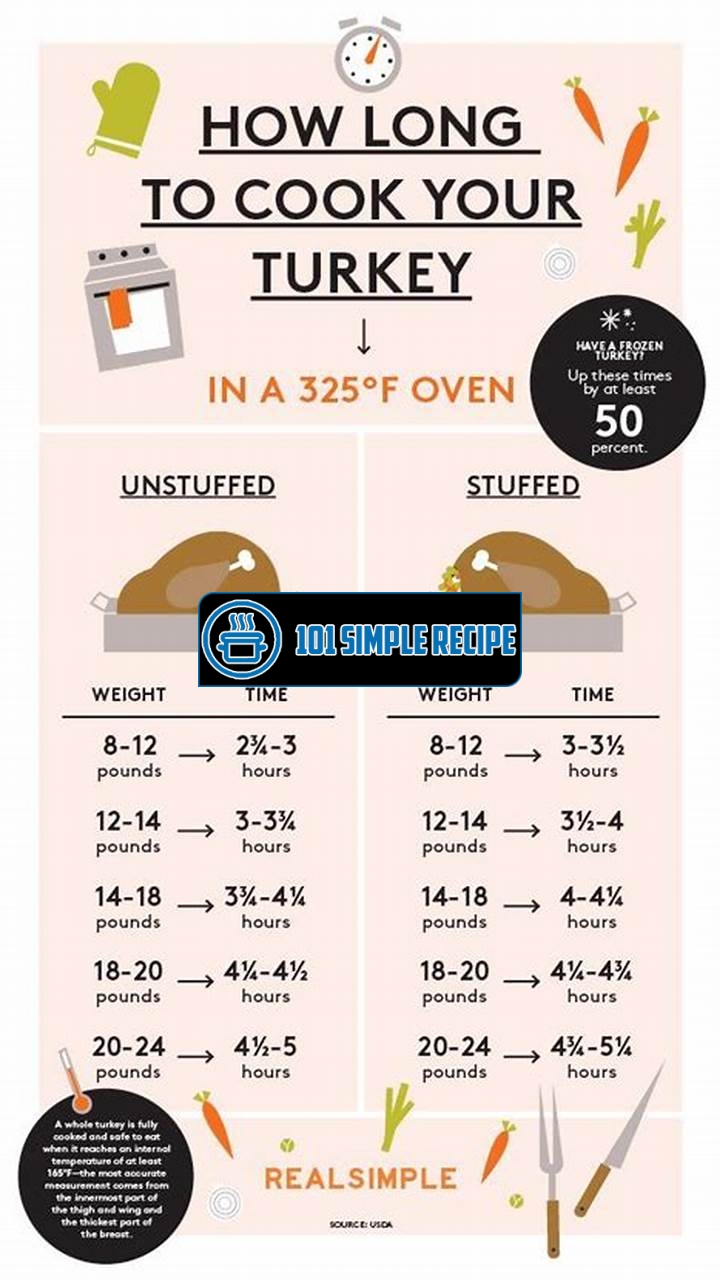Welcome to the ultimate guide on how to bake the perfect turkey! Whether you’re a seasoned chef or a first-time Thanksgiving host, these expert tips and tricks will ensure that your turkey turns out juicy, flavorful, and absolutely delicious. From prepping and seasoning to achieving that beautiful golden-brown skin, we’ve got you covered every step of the way. So grab your apron, sharpen your knives, and get ready to impress your family and friends with a mouthwatering turkey that will be the star of your holiday feast.

Preparation for Roasting a Turkey
In order to bake a delicious turkey, it is important to properly prepare the bird before it goes into the oven. This includes three essential steps: thawing the turkey, cleaning and seasoning it, and trussing it. By following these steps, you can ensure that your turkey is flavorful and perfectly cooked.
Thawing the Turkey
Thawing the turkey is the first step in preparing it for roasting. It is crucial to thaw the bird completely before cooking to ensure even cooking and to prevent any potential foodborne illnesses. There are two safe methods for thawing a turkey: in the refrigerator and in cold water.
- Refrigerator method: This is the preferred method for thawing a turkey. All you need to do is place the wrapped turkey on a tray or in a shallow pan and keep it in the refrigerator. Allow approximately 24 hours of thawing time for every 4 to 5 pounds of turkey. Make sure to keep the turkey in its original packaging to prevent any cross-contamination.
- Cold water method: If you are short on time, you can thaw the turkey in cold water. Fill a clean sink or large container with cold water and submerge the wrapped turkey. Change the water every 30 minutes to keep it cold. Allow roughly 30 minutes of thawing time per pound of turkey. Once the turkey is thawed, cook it immediately.
It is important to note that thawing a turkey at room temperature is not recommended, as it can allow bacteria to grow and cause foodborne illnesses.
Cleaning and Seasoning the Turkey
Once the turkey is thawed, it is time to clean it and season it to enhance its flavor. Start by removing the giblets and neck from the cavities of the turkey. Rinse the turkey inside and out with cold water, making sure to remove any excess ice or ice crystals. Pat the turkey dry with paper towels.
Next, you can season the turkey according to your taste preferences. You can use a dry rub or a wet marinade to add flavor. Some popular seasonings for turkey include salt, pepper, garlic powder, onion powder, paprika, and dried herbs like thyme, rosemary, and sage. Make sure to season both the inside and outside of the turkey for maximum flavor.
After seasoning, let the turkey sit at room temperature for about 30 minutes to allow the flavors to penetrate the meat.
Trussing the Turkey
Trussing the turkey is the process of tying the wings and legs close to the body to ensure even cooking and a beautiful presentation. Trussing helps the turkey retain its shape and juiciness while roasting.
To truss the turkey, start by tucking the wing tips under the turkey’s back. Then, tie the legs together with kitchen twine. This will help the turkey cook evenly and prevent the wings and legs from drying out or burning.
By following these essential steps of thawing the turkey, cleaning and seasoning it, and trussing it, you can prepare a turkey that is not only delicious but also cooked to perfection. Remember to plan ahead and allow enough time for thawing, and don’t forget to season the turkey generously. Happy roasting!
Tips for weight loss in a recipe
Calculating the Cooking Time
When it comes to baking a delicious turkey, understanding the factors that determine the cooking time is crucial. Achieving a safe and succulent result relies on getting the timing just right. The cooking time for a turkey can vary depending on several key factors, including the turkey’s size and weight, as well as the oven temperature and roasting method used. To ensure a perfectly cooked turkey, it is also important to use a meat thermometer.
Turkey Size and Weight
The size and weight of the turkey play a significant role in determining the cooking time. As a general rule of thumb, plan for about 13 minutes of cooking time per pound of turkey. However, it’s important to note that this is just a rough estimate, and other factors can influence the cooking time as well. Turkey size can range from small to extra-large, so it’s crucial to adjust the cooking time accordingly.
For example, let’s say you have a 12-pound turkey. Using the general rule, you would calculate a cooking time of approximately 3 hours and 36 minutes. However, keep in mind that this time can vary based on factors such as the oven temperature and roasting method.
Oven Temperature and Roasting Method
The oven temperature and roasting method also impact the cooking time for a turkey. The oven temperature is typically set between 325°F and 350°F (163°C to 177°C) for roasting a turkey. A higher temperature will result in faster cooking, but it’s essential to ensure that the turkey is cooked to a safe internal temperature to avoid any risk of foodborne illness.
Roasting methods can vary, including traditional oven roasting, convection roasting, or even using a rotisserie. Each method may require slight adjustments to the cooking time. For example, convection roasting generally requires less cooking time than traditional oven roasting. It’s important to consult the manufacturer’s instructions and guidelines for your specific oven and roasting method.
Using a Meat Thermometer
Using a meat thermometer is a foolproof way to determine the doneness of your turkey and ensure it’s perfectly cooked. A meat thermometer is inserted into the thickest part of the turkey (usually the thigh) without touching the bone. The thermometer will give an accurate reading of the internal temperature.
For a turkey to be safe to eat, it must reach an internal temperature of at least 165°F (74°C). However, if you prefer a juicier turkey, you may want to aim for a slightly higher internal temperature, around 170°F (77°C). This will ensure that the turkey is fully cooked while still remaining moist and flavorful.
By following these tips and understanding the factors that determine the cooking time, you can bake a delicious turkey that will impress your guests and leave them coming back for seconds. Remember to consider the turkey size and weight, oven temperature and roasting method, and use a meat thermometer to ensure a perfectly cooked and safe turkey. Happy baking!
Roasting Techniques for Juicy Turkey
Discover different roasting techniques to produce a juicy and tender turkey with flavorful crispy skin. Whether you’re a seasoned chef or a novice in the kitchen, these techniques will help you bake the perfect turkey for any occasion. So let’s dive right in!
Classic Roasting Method
The classic roasting method is a tried and true technique that has been used for years to cook delicious turkeys. To start, preheat your oven to 325°F (163°C) and make sure your turkey is fully thawed and cleaned. Place it on a roasting rack inside a roasting pan, breast side up.
Season your turkey with salt, pepper, and any additional herbs or spices of your choice. Emphasize the savory flavors by adding rosemary, thyme, or sage. Next, cover the turkey loosely with aluminum foil and place it in the oven.
For a moist and tender turkey, it’s important to baste it every 30 minutes. To baste, simply remove the turkey from the oven, tilt the pan, and use a spoon or baster to collect the juices. Pour the juices over the turkey to keep it moist and flavorful.
Pro Tip: To achieve a beautifully browned skin, remove the foil during the last hour of cooking and baste the turkey with melted butter. This will give your turkey a rich and crispy exterior that everyone will love.
Basting and Buttering Techniques
Basting and buttering techniques add an extra layer of flavor and moisture to your turkey. Consider brining your turkey before roasting to help lock in moisture. A simple brine consists of water, salt, sugar, and various herbs and spices. The key is to let the turkey soak in the brine for at least 24 hours before roasting. This will ensure a juicy and well-seasoned bird.
When it comes to buttering, you can either rub softened butter on the turkey’s skin or create a compound butter with herbs and spices. This will not only add flavor but also give the skin a golden and crispy texture. Apply the butter evenly all over the turkey, including under the skin, for maximum flavor and moisture.
Throughout the roasting process, baste the turkey with its own juices and melted butter every 30 minutes. This will keep the turkey moist and add layers of flavor to every bite.
High-Heat Roasting Technique
If you’re short on time but still want a juicy and flavorful turkey, the high-heat roasting technique is perfect for you. Preheat your oven to 450°F (232°C) and prepare your turkey as usual, seasoning it with salt, pepper, and your favorite herbs and spices.
Place the turkey breast side down on a roasting rack inside a roasting pan. This allows the fats from the dark meat to drip down and keep the breast meat moist and succulent.
Cook the turkey at high heat for the first 30 minutes, then reduce the heat to 325°F (163°C) for the remaining cooking time. ️ This initial blast of high heat helps to seal in the juices and creates a beautiful golden crispy skin.
Remember to baste the turkey every 30 minutes with its own juices or melted butter to prevent it from drying out. Once the turkey reaches an internal temperature of 165°F (74°C), it is ready to be taken out of the oven and carved.
With these roasting techniques, you can confidently bake a delicious turkey that will impress your family and friends. Whether you choose the classic method, basting and buttering, or the high-heat technique, the result will be a turkey that is juicy, tender, and full of flavor.
Tips for Perfectly Cooked Turkey
When it comes to preparing a delicious turkey, there are several key tips and tricks to keep in mind. From ensuring proper resting to mastering the art of carving, these techniques will help you serve up a perfectly cooked bird that will impress your guests. So, let’s dive into the details and discover how to make your turkey truly exceptional!
Resting the Turkey
Resting the turkey after it comes out of the oven is a crucial step in achieving a juicy and tender bird. Allow the turkey to rest for at least 20 minutes before carving. This will give the juices time to redistribute throughout the meat, resulting in a more flavorful and moist turkey.
During this resting period, cover the turkey loosely with aluminum foil to keep it warm. This will also help to retain its juiciness. Resist the temptation to start carving immediately – patience is key when it comes to resting the turkey.
Carving the Turkey
Carving a turkey can be intimidating, but with a few simple steps, you can master this skill. Start by removing the legs and wings. Then, slice the breast meat against the grain into thin, even slices. This will ensure that each slice is tender and easy to chew. ️
Remember to use a sharp carving knife to make clean cuts. It’s also helpful to have a carving fork to hold the turkey steady while you carve. Take your time and carve with confidence – your guests will be impressed with your carving skills!
Utilizing Leftover Turkey
After enjoying your delicious turkey dinner, you may find yourself with leftovers. Don’t let these go to waste! There are numerous ways to utilize leftover turkey and create flavorful meals.
One popular option is to make turkey sandwiches. Layer slices of turkey on your favorite bread with some cranberry sauce and stuffing for a tasty and easy-to-assemble meal. Another idea is to use the leftover turkey in a hearty turkey soup or stew. The possibilities are endless!
Remember, when using leftover turkey, store it in an airtight container in the refrigerator. It’s important to consume the leftovers within a few days to ensure freshness and safety.
In conclusion, by following these tips for resting, carving, and utilizing leftover turkey, you can elevate your Thanksgiving or Christmas dinner to a whole new level. Your guests will be impressed with the perfectly cooked turkey, and you’ll feel confident in your culinary skills. So, get ready to roast that bird and enjoy a delicious feast!
Enhancing the Flavor of Roasted Turkey
Discover delicious flavor-enhancing techniques and recipe ideas to elevate the taste of your roasted turkey.
Aromatics and Stuffing Options
When it comes to enhancing the flavor of your roasted turkey, incorporating aromatics and stuffing options can make a significant difference. Aromatics are ingredients that infuse the turkey with beautiful flavors and aromas during the baking process. Traditional aromatics include onions, garlic, celery, and fresh herbs such as rosemary, thyme, and sage. These ingredients not only add depth of flavor but also fill your kitchen with an enticing aroma as the turkey bakes.
Consider experimenting with different stuffing options to add an extra layer of flavor. Classic stuffing recipes often involve a combination of breadcrumbs, herbs, vegetables, and broth. You can also try incorporating fruits like apples or dried cranberries for a touch of sweetness. Just make sure to thoroughly cook the stuffing to ensure it’s safe to consume.
Remember: The aromatics and stuffing options you choose can greatly impact the taste of your roasted turkey. Don’t be afraid to get creative and tailor the flavors to your preferences.
Marinades and Brine Solution
Another excellent way to enhance the flavor of your roasted turkey is by using marinades and brine solutions. Marinades are flavorful liquids that turkey is soaked in before baking, while brine solutions involve immersing the turkey in a saltwater mixture for several hours. Both methods help infuse the meat with moisture and flavor.
Marinades can be made from a variety of ingredients, such as citrus juices, soy sauce, garlic, and herbs. The turkey should be submerged in the marinade for at least a few hours or overnight for maximum flavor absorption. On the other hand, brine solutions typically consist of water, salt, sugar, and spices. The turkey is soaked in this mixture to ensure it stays moist and flavorful during the baking process.
Tip: Experiment with different marinades and brine solutions to find your favorite flavor combinations. You can even add spices like cinnamon or cumin to create unique and delicious profiles.
Serving Sauces and Gravies
No roasted turkey is complete without the perfect serving sauces and gravies to accompany it. These flavorful additions not only enhance the taste of the meat but also provide a delicious topping that complements the dish. Traditional gravy is made by combining the turkey drippings with flour, broth, and seasonings. You can customize your gravy by adding herbs, spices, or even a splash of wine for extra depth.
Other delicious serving sauces to consider include cranberry sauce, which adds a touch of sweetness, and tangy mustard-based sauces that bring a unique twist to the turkey. Feel free to explore different flavor combinations and find the ones that best suit your taste preferences.
Remember: The right sauce or gravy can take your roasted turkey to the next level. Don’t hesitate to elevate your meal with a variety of delicious options.
How to make a White Castle recipe
Frequently Asked Questions
We hope this article has provided you with all the necessary information on how long to bake a turkey. If you still have any unanswered questions, please refer to the FAQs below:
| No. | Questions | Answers |
|---|---|---|
| 1. | How long does it take to bake a turkey? | The baking time for a turkey depends on its weight. As a general rule, estimate about 15 minutes per pound of turkey when baking at 325°F (163°C). However, it’s always recommended to use a meat thermometer to ensure the turkey reaches an internal temperature of 165°F (74°C) for food safety. |
| 2. | Do I need to baste the turkey while baking? | Basting is a personal preference and not a requirement. Basting can help keep the turkey moist, but it also slows down the cooking process. If you choose to baste, do it quickly so as not to let too much heat out of the oven. Alternatively, some people prefer to cook the turkey without basting, and it still turns out delicious. |
| 3. | Should I stuff the turkey or cook the stuffing separately? | It is recommended to cook the stuffing separately from the turkey. Stuffing the turkey can lengthen the cooking time and increase the risk of the turkey not cooking evenly. It is safer and easier to prepare the stuffing in a separate dish while the turkey bakes. |
| 4. | Do I need to cover the turkey with foil while baking? | Covering the turkey with foil for the first part of the cooking time can help prevent the skin from getting too dark. However, it is not necessary to cover the turkey for the entire cooking time. If you prefer a golden brown and crispy skin, leave the turkey uncovered for the last hour or so of baking. |
| 5. | How can I tell if the turkey is done? | The best way to determine if the turkey is done is by using a meat thermometer. Insert the thermometer into the thickest part of the thigh without touching the bone. The turkey is safely cooked when it reaches an internal temperature of 165°F (74°C). Alternatively, you can check if the juices run clear when you pierce the turkey with a fork. |
| 6. | How long should I let the turkey rest before carving? | After removing the turkey from the oven, let it rest for about 20 minutes before carving. This allows the juices to redistribute and results in a juicier and more flavorful turkey. |
Thank You for Reading!
We hope this article has provided you with all the information you need to successfully bake a turkey. Remember to follow the recommended cooking times and temperatures, and don’t forget to use a meat thermometer for accuracy. Whether you’re cooking for a holiday feast or a special occasion, a perfectly roasted turkey is always a crowd-pleaser. If you have any more cooking questions or need further assistance, please visit our website again in the future. Happy baking and enjoy your delicious turkey!
Jump to Recipe
How Long to Bake a Turkey

Learn how long to bake a turkey to perfection with this helpful guide. Find the recommended cooking times, temperature, and essential tips for a juicy and flavorful turkey.
- 1 turkey (12 pounds)
- Salt
- Pepper
- Herbs and spices (optional)
- Preheat the oven to 325°F (163°C).
- Remove the giblets and neck from the turkey cavity. Rinse the turkey inside and out with cold water. Pat dry with paper towels. Season the turkey with salt, pepper, and other desired herbs and spices.
- Place the turkey, breast side up, on a rack in a roasting pan. Tuck the wings under the turkey and tie the legs together with kitchen twine.
- Roast the turkey in the preheated oven for about 3 hours or until the internal temperature reaches 165°F (74°C) when measured with a meat thermometer. Baste the turkey with pan juices every 30 minutes for a moist and golden brown result.
- Remove the turkey from the oven and let it rest for about 20 minutes before carving. This allows the juices to redistribute and ensures a tender and flavorful turkey.
- Carve the turkey and serve it with your favorite side dishes. Enjoy!






